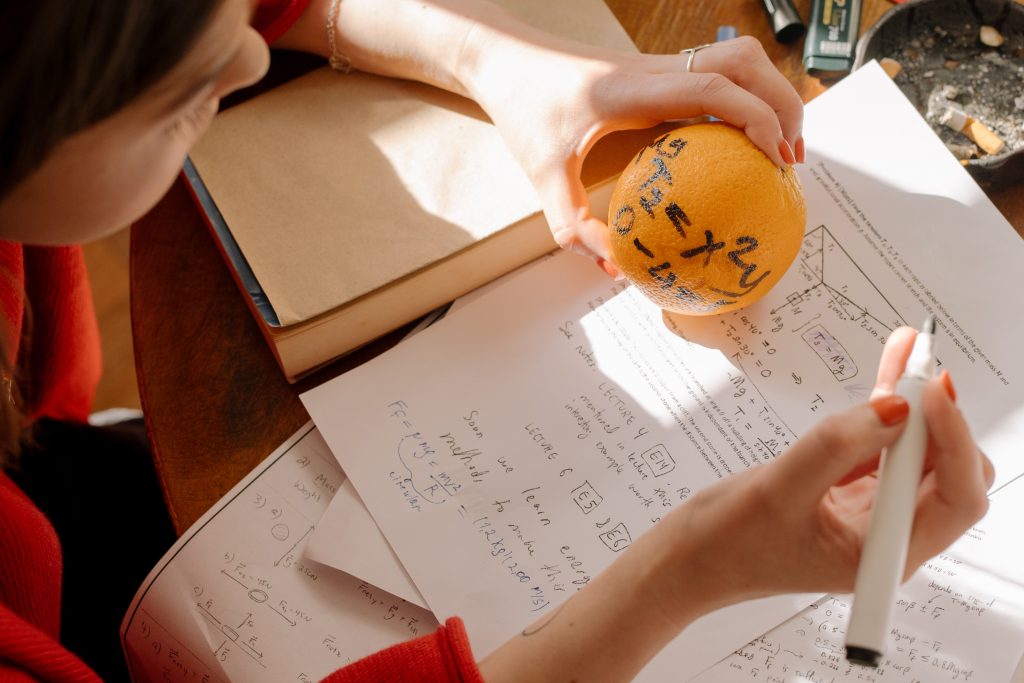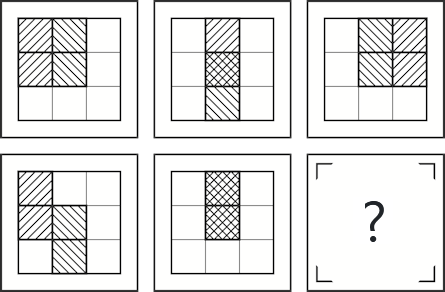The GMAT exam is almost exclusive to graduate business schools. So it is safe to say that you are applying for an MBA program and passing this test is a compulsory requirement for the program, right?
Not many people can readily decide on pursuing an MBA so we are glad you’ve made your choice already.
The purpose of the GMAT Math section is to test your ability to analyse data and make conclusions with reasoning skills.
The math you require to ace the GMAT is not different from you must have been taught in your secondary school classes. But then again it is not just about crunching big numbers. It’s all about how well you can put your analytical skills to good use.
So, it is very likely that you haven’t seen an algebra question. Or even had a chance to solve one for a very long time. You have no idea what to do with a math question and the GMAT exam is drawing near. Relax! Let’s save you from unnecessary panic attacks by showing you what to do in the GMAT Math section.
Of course, there’s much talk out there about how difficult and tasking this section of the test is. But we’ve also seen many test takers ace this section and we think you can too. That’s why we wrote this article to teach you all you need to know about the GMAT math section.
First things first…
What the GMAT Math Section Looks Like
Knowing the structure of the math section and familiarizing yourself with it before the test day is one step to getting your game on with the GMAT Math questions.
Before we go further into what this section looks like, here’s something you should know. Like the questions on the Verbal section of the GMAT exams, the questions on the Math section are computer-adaptive. This implies that when you submit an answer for a particular question, you can’t to go back to that question. That’s because the structure of the test is to provide you with easier or harder questions based on the accuracy of your answers.
READ: Last-Minute GMAT Test Tips: 6 Things You Should Know Before the Test Day
GMAT Math Section Content
One thing you need to know about the GMAT math section is its content and question patterns. The Quantitative (Math) section contains 36 questions. They are of two different types ; the Problem Solving and the Data Sufficiency questions. You must complete these sections within 62 minutes. The section tests geometry, algebra, and arithmetic skills.
Here’s a close-up on the question types in this section:
The Problem-Solving Questions (PS)
This is like the usual five-option multiple choice question format that you should be used to for many years now. You really don’t need much explanation here. It’s just one question with 5 options you must make a choice from.
The trick to working effectively well and fast on the PS questions is to look at the answer options before you attempt solving the questions. Often times, the answers may give clues to what you need to solve the question.
A typical example will be spotting a list of answers that have square roots of 2 and 3. This sort of list will guide you on what is expected from you. You can tell that the question will be dealing with an isosceles or 30-60-90 triangle property or a geometry problem.
Handling PS questions this way could potentially save you a great deal of time on the math section.
The Data Sufficiency Questions (DS)
This format is the popular monster that is unique to this section of the GMAT test. It’s got special rules, hence, it requires unique strategies that you MUST
DS questions may be really frustrating even though you have a good knowledge of mathematical concepts. It is easy is to get tricked by the questions if you don’t pay attention to details and you make assumptions.
For the average math-inclined test taker, the math is not difficult. But the test is typically structured to hide information from the on-looking test taker.
What to do? Rearrange the given information to make it usable for the problem. Then again, you may be fooled to think some statements are needed to solve a particular problem. However, just one of the two is sufficient to tackle the problem.
For Example
Jason scored 780 on the GMAT. He used the options D, A&B, C, and, E in that order to make the right choice. Here’s what he had to say about how he handled the DS questions:
“When I think I have reached an answer choice, I will double check for any tricks or hidden information that might get me to a nearby answer choice. If I think the answer is A or B, I double check to see if the other statement can be sufficient as well, making it D. However, if one statement is clearly insufficient alone and I’m thinking A or B, I make sure I don’t need the clearly insufficient statement to be true, making the answer C.
If I think the answer is E, I check to see if I missed something that actually allows me to solve the problem with C. Then, if I think the answer is C, I make sure there’s no embedded information in A or B that allows me to do it with one statement alone. Finally, if I think it is C and am sure that A and B don’t work, I’ll check to see if I assumed something I shouldn’t, actually making the correct answer, E.”
PS: These two question types (PS and DS) are scattered all through the Math section. So, you will never know what question type to expect after each question you answer.
Studying for the GMAT Math Section
Math on the GMAT test and anywhere else must be learned and understood by practice, practice, and even more practice. This is why we advise you to give ample study time to this section of the test and the whole test before the test day.
Oh, just in case you were thinking life with the GMAT will be bliss with a calculator, we don’t mean to burst your bubble, but calculators aren’t allowed on this test. This means your scrap paper in conjunction with your head, becomes the seat of any calculation you will be making during the test.
So we advise you to dig a hole in the backyard of your house and bury your calculator(s) there for the entire length of your study and practice period…Ok, just kidding… But you should really consider doing away with your calculator. This way, you’ll have mastered the art of answering the GMAT questions without depending on a calculator before the test day. You should also try to do basic arithmetic operations in your head as often as you can.
READ: Should I Take GMAT or GRE for My MBA Admission?
Build Your Mental Arithmetic Skills
To hone this skill, you can decide to add up the cost of your groceries in your head before you proceed to checkout and deduct that sum from the amount you plan to give the cashier to know how much change you’ll be collecting. You can then crosscheck your answer with the values the cashier gives you from his or her own calculation; which is usually electronic to measure how well you able to do quick mental arithmetic.
Also familiarize yourself with the halving and doubling, the division tricks, and the necessary math shortcuts you can get done mentally. You could test the accuracy of your mental arithmetic by having someone double check your answers with a calculator while you do the operations in your head.
As with all other sections on the GMAT, you will most likely meet solid brick walls called challenges. You should deal with them. As soon as you discover you have a weakness in a particular aspect of the quantitative section, ensure you isolate the issue and put in more work to understand the concept(s) of the questions you got wrong.
We’ve also observed from research that some test takers are unable to store information and keep them straight. They understand a particular concept and can handle questions from such concepts easily but as soon as they get into the test centre they forget what they learnt, they begin to panic and the whole test becomes a mess. To avoid issues like this we advise you to put in a good number of hours into proper study where you will also identify test-taking tips and strategies on how to manage your time on each section and question properly.
Time Management!
Time is everything on the GMAT. All you know about the GMAT math section will be useful if you can’t manage your time properly. The best way to learn how to manage the allotted time properly is definitely not at the test centre but during your practice time. Learn to pace yourself to work against the clock especially as you progress in your study for the exams.
At the early stages of studying, because you want to get familiar with the necessary concepts, you may be a bit lenient with yourself. But as soon as you begin to get a hang of the test, ensure you time yourself.
Of course, while practicing you will get some questions wrong. You should expect this. But you must note the questions you got wrong, how you got them wrong, and the concepts you need to gain mastery of to ensure you don’t make the same mistakes again.
Finally, the best way to put these things into practice is to have a good study guide. This is why we invite you to peek the Effiko store for the best GMAT Study Guide and Prep Books.
That’s all you need to know about the GMAT math section. If you found this helpful, then you should share it with someone who is also preparing for the GMAT test.
Best wishes…


